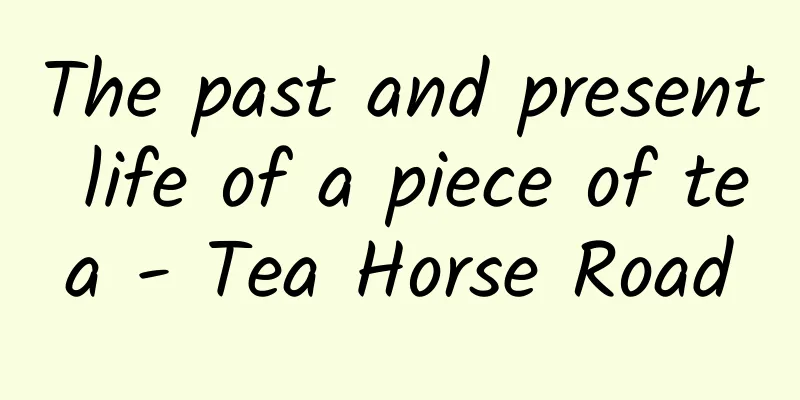The efficacy and function of Dali Aucklandia

|
The traditional Chinese medicine Dali costus root is a relatively good medicinal material, but many people don’t know much about it. So let’s take a closer look at the traditional Chinese medicine Dali costus root below. 【Other name】 Rhizoma Aucklandiae [Source] Medicinal material source: The root of the plant costusroot of the Asteraceae family. [Original form] Atractylodes macrocephala is a perennial rosette-shaped herb. The roots are thick. The stem is extremely short. Simple leaves are alternate; petiole is 2-8cm long; leaves are thin leathery; leaf blades are pinnately lobed to mid-lobed, obovate or obovate-elliptical, 9-14cm long, 8-10cm wide, with rough hairs on both sides or only on the veins. The capitula is solitary; the involucral bracts are about 5 layers, leathery with brown membranous edges, obtuse or pointed at the apex; the corolla is purple, the bracts are about 5 layers, leathery with brown membranous edges, obtuse or pointed at the apex; the corolla is purple, and the corolla tube is 2-3 times longer than the eaves; the attached pieces at the base of the anthers are often torn; the receptacle has short subulate thorns. Achenes are flat 3-angled; brown; pappus is about 3 layers, bristle-like, with short feathers; dirty yellow. Flowering and fruiting period is July to September. [Habitat distribution] Ecological environment: Growing on hillside wasteland or grassland at an altitude of 2900-4000m. [Properties] Property identification: The root is cylindrical, slightly similar to chicken bones, or cut into two halves, 5-25cm long and 0.7-1.5cm in diameter. The surface is yellow-brown or gray-brown, the outer skin is mostly absent, and there are longitudinal wrinkles or longitudinal fissures and protruding lateral root marks. The texture is hard and easy to break, the cross section is slightly flat, brown or brownish yellow, the thickness of the bark and wood is slightly equal, scattered brown dot-like resin ducts can be seen, and the cambium ring is obvious. The aroma is fragrant and unique, weaker than the woody scent, the taste is slightly bitter and spicy, and it sticks to the teeth when chewed. 【Nature and flavor】 Spicy; bitter; warm 【Functions and indications】Promote qi circulation; relieve pain. Mainly used for pain in the abdomen, ribs, diarrhea, dysentery, indigestion [Usage and Dosage] For oral use: decoction, 6-9g; grind into powder, 1.5-3g. 【Excerpt】 Chinese Materia Medica The above is a detailed introduction to the medicinal value of Dali costus root. There are also some ways and methods when eating Dali costus root. The above methods of eating are very helpful for regulating various problems of the human body, so you can do it with confidence. |
<<: The efficacy and function of red straight swertia
>>: The efficacy and function of Hubei mistletoe
Recommend
Have you ever seen a Transformer traveling through hills and mountains? Here it comes!
In the forestry production battlefield of hilly a...
Epimedium price
The wolfberry is a perennial herb. Its grass can ...
"59 types of coffee were found to contain carcinogens", so coffee can no longer be drunk safely? The truth is →
Recently, the topic #59 types of coffee all found...
Drinking coffee increases cortisol. What should coffee addicts do?
Author: Xue Qingxin, registered dietitian Reviewe...
The efficacy and function of abacus
Abacus is a kind of traditional Chinese medicine....
What are the taboos of eating American ginseng?
I don’t know if you have ever eaten American gins...
The correct time to take Chinese medicine
There are currently two aspects of treating disea...
The creature on earth that can "drink" the most is actually the bumblebee!
In a corner of nature Hidden a shocking secret Th...
Satellite reveals! This is how the United States treats minors who enter the country illegally!
Every day, hundreds of remote sensing satellites ...
The fresher, the more dangerous! A type of "daylily" on the high green mountains, if eaten incorrectly, it can cause poisoning!
There is a song whose lyrics may be familiar to m...
Did science stagnate after Einstein?
There is often such a question on the Internet, w...
'The Devil's Apple': How did potatoes end up on our tables?
In 1834, the British Royal Warship HMS Beagle was...
The efficacy and function of Artemisia selengensis
Artemisia affreniformis is one of the common trad...
The efficacy and function of sea cucumber
In fact, the occurrence of many human diseases is...
What is the medicinal value of Ginkgo?
Everyone should be familiar with ginkgo, which is...









